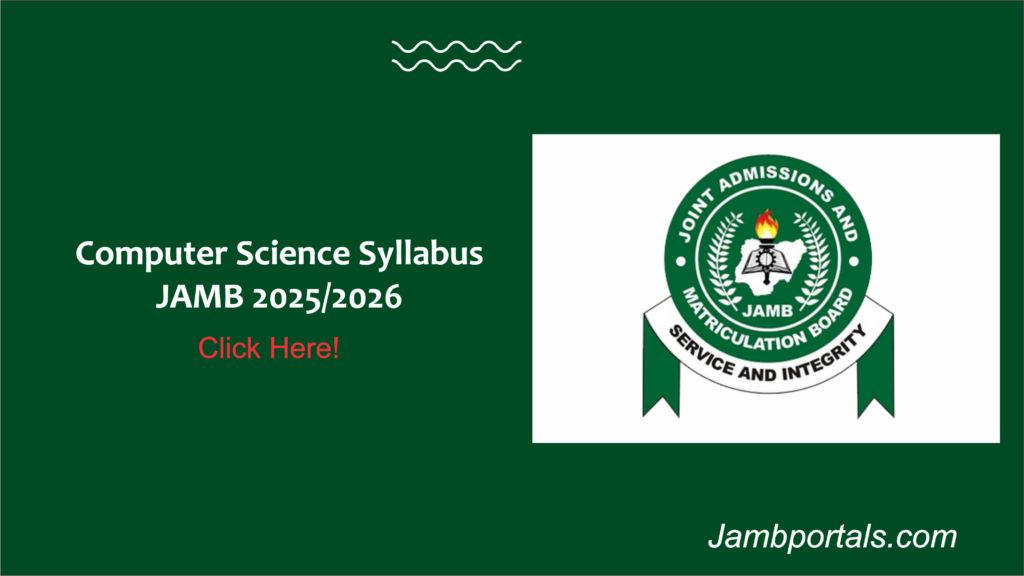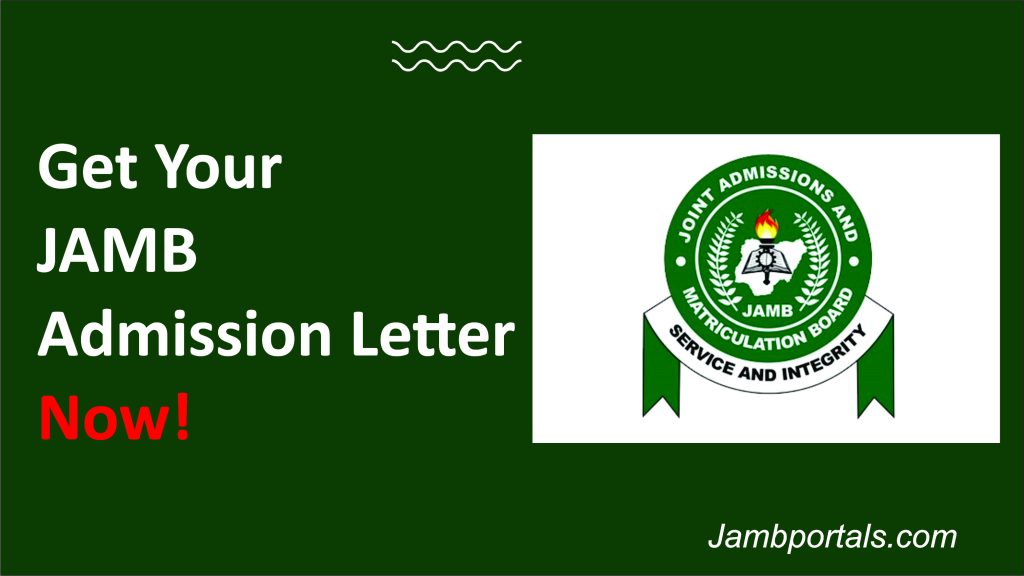
Are you a UTME candidate preparing to ace the 2025/2026 JAMB examination in Computer Science? The official JAMB syllabus for Computer Science is now available. This guide will walk you through the key topics to help you perform at your best.
Syllabus Overview
| Examination Type | UTME / Direct Entry |
| Examination Year | 2025/2026 |
| Syllabus | Computer Science |
| File Format | |
| File Size | 364KB |
The JAMB syllabus is a comprehensive outline of topics you are expected to study and understand before sitting for the Computer Science exam.
It serves as a roadmap, ensuring you focus on the right areas and don’t waste time on irrelevant content. It is also designed to equip you with a strong understanding of computer science principles.
IMPORTANT: Check JAMB 2025 Syllabus For All Subjects
We recommend studying the syllabus to every involved candidates as it will you feel more prepared and less overwhelmed, and save you from wasting time on unrelated topics.
General Objectives
- Evolution of Computing Systems
- Basic concepts of computer and its operations
- Problem solving skills, data processing and practical skills in Computing
- System software and Application Software.
- Operations of Basic computer hardware – Input, Output, Memory and Central Processing Unit
- Application of Online resources and Online skills
- Ethics and human issues in computing
- Career Prospects in Computing
| TOPICS/CONTENTS/NOTES | OBJECTIVES |
|---|---|
| SECTION A: EVOLUTION OF COMPUTING 1. History of Computing a. Pre-Computing Age – 19th century Features and components early computing devices b. Computing Devices – 20th Century c. The history behind each device | Candidates should be able to; i. Identify the various computing devices since the beginning of counting/computing – Abacus – Slide Rule – Napier’s Bones – Pascal Calculator – Leibnitz Multiplier – Jacquard Loom – Charles Babbage’s Analytical Engine – Hollerith Census machine and – Burrough’s machine. ii. Discuss the contributions and uses of each of the founders of these devices: – ENIAC – EDVAC – UNIVAC 1 – Desktop Personal Computers, etc |
| 2. Classification of computing devices a. By Generation b. By Size c. By Purpose d. By Type | Candidates should be able to: i. Relate each generation with its characteristic feature. – First, Second, Third, Fourth to current generation. ii. Describe each generation under the following: – Year of Development – Basic components/Type of Technology – Speed of operation – Storage Capacity/Component iii. Explain the differences in the classification of computing systems by size (micro, mini, mainframe, and super) iv. Differentiate among the various types of modern computer systems in respect of sizes and basic components, data and usage – Personal Computers – Desktops – Laptops – Tablets – Hand-held – Servers – Workstations – Mainframes – Wearable – Super Computers. – Digital – Analog – Hybrid – Special purpose – General purpose etc. v. State the importance and use of these computing systems |
| SECTION B: Fundamentals of Computing 1. Overview of Computing Systems a. Two main constituents of a computer (hardware and software) b. Characteristics of computers c. Type, examples and uses of computer hardware d. Logic Circuits e. Types, examples and uses of software | Candidates should be able to; i. Define Computer system in relation to its nature and programmability ii. List functional parts of computer systems iii. Explain the characteristics of computers (Electronic, Accuracy, Speed, interactive, Reliability, Consistency, Large Storage etc.) iv. Identify the differences between hardware and software Candidates should be able to; i. Define and give examples of hardware devices ii. List components of computer hardware, their functions and different types Central Processing Unit, Peripherals (Input and Output devices) and Storage media iii. Explain the differences between input and output devices iv. Explain the functions of major input devices and give examples of the major input devices (keyboards, mouse, scanner, joystick, light pen, voice, digital camera, etc.) v. Explain the classification of keys on the keyboard (function, numeric, alphabetic, cursors. vi. Explain the features, functions and operations of the mouse vii. Explain the differences among keyboard, mouse, light pen and scanner, digital camera and output devices viii. Define and give examples of output devices (monitor, printer, speaker, plotters) ix. List the different types, features and uses of each output device above. x. Explain the similarities and differences among inkjet, laser and line printers xi. List the components of CPU – Arithmetic and Logic Unit (ALU), Control Unit (CU) and Registers. xii. Explain the functions of ALU, CU and Registers. xiii. Distinguish between Primary and Secondary Memory (Storage) units xiv. List the components of Primary Memory Unit (Random Access Memory (RAM), Read Only Memory (ROM)) xv. Explain the uses and differences between RAM and ROM |
Download JAMB 2025 Syllabus for Computer Science
Click the button below to download the full 2025 Computer Science syllabus on your smartphone or laptop.
Frequently Asked Questions (FAQs)
Are practical skills tested in JAMB Computer Science exams?
No, JAMB primarily tests theoretical knowledge. However, understanding basic practical concepts such as programming and hardware operations can enhance your ability to answer questions effectively.
How many questions are set for Computer Science in JAMB?
JAMB typically includes 40 questions per subject in its UTME. However, this number may vary slightly depending on the year.


